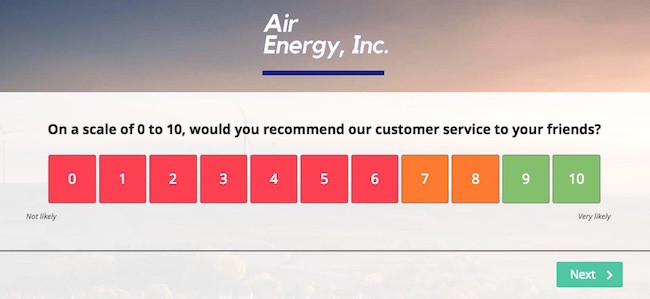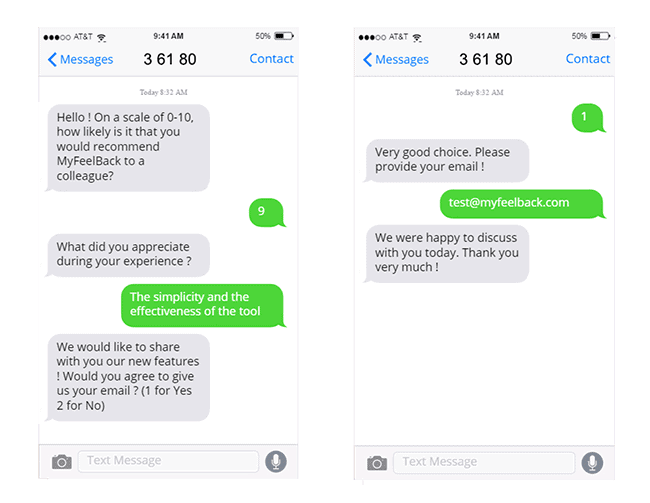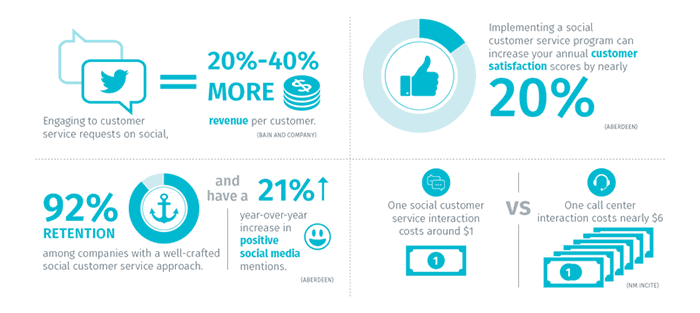For a business to succeed, it has to adapt to the evolving behavior of its customers. Over the past few years, customers have rapidly become cross channel customers, meaning they use multiple communication channels to interact, communicate, and purchase. Therefore, in order to keep up, when measuring customer satisfaction, you need to develop a cross...
For a business to succeed, it has to adapt to the evolving behavior of its customers. Over the past few years, customers have rapidly become cross channel customers, meaning they use multiple communication channels to interact, communicate, and purchase.
Therefore, in order to keep up, when measuring customer satisfaction, you need to develop a cross channel strategy for collecting customer data in order to stay relevant and effective. Just like you use multiple channels to sell your product, you need multiple channels to get feedback on it. Here are our tips for how to reach your customers on multiple communication channels and get the most accurate information and the best feedback possible.
Why do you need to measure your customer satisfaction across channels?
Now that connecting through technology is the new norm, companies are paying close attention to the importance of measuring customer satisfaction.
In an economic climate of a strong competition, customers are more likely to be picky and flip back and forth between brands. This means that unsatisfied clients can quickly lead to churn and a low retention rate.
Check out this blog post for more information on Why your company should be measuring customer satisfaction,
The most useful tool for measuring customer satisfaction is without a doubt the survey.

Technology allows companies to take advantage of immediate surveys, or surveys that are sent out after a specific interaction with a customer, like a delivery, a phone call with customer support, or a product order. These surveys allow you to develop a continuous exchange of feedback with your customer and are therefore extremely useful in collecting customer knowledge. Not only that, but immediate surveys are shorter than general surveys and allow you to get a better response rate.
What channels are my customers using?
Today there are multiple touchpoints of interaction between a business and customer. In this way, most companies are already multi-channel. Your customers can order products on your website or come into the store to buy it in person. And then, if they have a problem, they can come to the store, or they can reach out to you by email, phone, even social media.
This shows how you are making sure to offer them multiple methods to get in touch with you because you want to make their experience as pleasant as possible. Measuring how well this is working can help you see where you are succeeding, and where you need to put in more effort.
If your clients generally use more than one communication channel in order to complete actions related to your business, then they are cross channel.

If you want to measure the quality of your customer experience, and your customer satisfaction in general, you need to do it on multiple channels of communication.
If you need help creating a customer feedback survey, check out our guide here.
Cross-channel customer satisfaction measurement allows you to:
- Gain more customer data. The more channels you offer a survey on, the more people will see it, and the more responses you will get.
- Gain immediate, targeted responses.
- Adapt your measurement of customer satisfaction to the cross-channel habits of your customers (social media, email, etc.)
- Spread out your survey requests across different channels to avoid putting too much pressure on your customers.

However, you need to make sure that you correctly map out your communication channels to understand where your customers are connecting and overlapping, and where there are voids.
How to measure customer satisfaction on these channels?
If you are asking yourself, “Where should we be measuring customer satisfaction?” You aren’t alone. There are a lot of different factors that go into this decision.
First of all, you should clearly identify all the points of contact between your company and your customers: your website, email, sales outlets, telephone, sms, mobile applications, and social networks.
It is obvious that you can only distribute your survey on the channels used by your company. Meaning that if you do not have a mobile application, your cross-channel measurement strategy will not integrate this channel.
The mapping of your channels of communication is the first step in the implementation of a strategy for measuring cross-channel customer satisfaction.
3 main parameters have to be taken into account to choose the right channel to measure customer satisfaction:
The level of use of each channel by your customers
If you only have 50 Facebook followers, this channel won’t be the most relevant to collect opinions and measure satisfaction. You should focus on the channels your customers use the most regularly when they interact with your brand.
On the other hand, if you have a lot of brick and mortar stores and this is still the main way that customers interact with you, then satisfaction should be measured in-store. It can still be on a computer, just make it available inside the store.
What you want to measure and the length of the survey
Long surveys are difficult to disseminate on mobile phones. However, texting is a great option if you want to get a large response rate for a short survey, like a Net Promoter Score question and collecting an email to open a new channel.

The profile of your customers
The younger your customers are, the more relevant social networks are and the more you should be prioritizing and monitoring them.

The objective of measuring cross channel satisfaction is to be able to collect continuous feedback on your various channels. In MyFeelBack, each survey can be deployed on the channels of your choice simultaneously: whether it be website, email, text, social networks, or a mobile app.
If you want to be a relevant business, you cannot market on one communication channel anymore. By the same token, you cannot collect feedback on one channel either. Customers express themselves in a myriad of different ways, and this often depends on which channel they are using to communicate. The more channels you open up for your customers to communicate on, the more authentic, helpful feedback you will receive.








